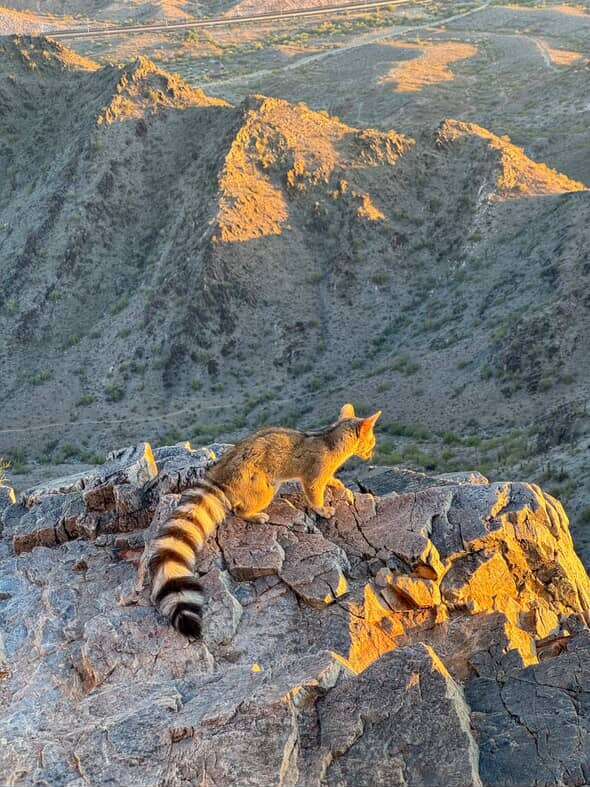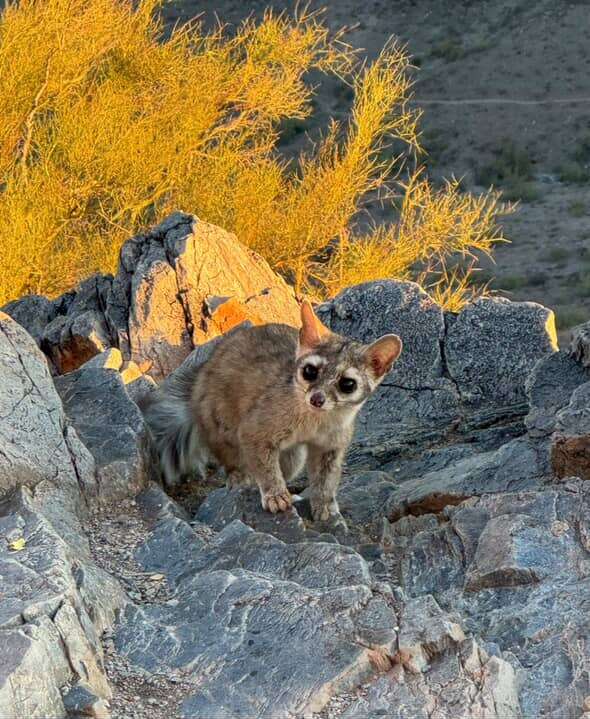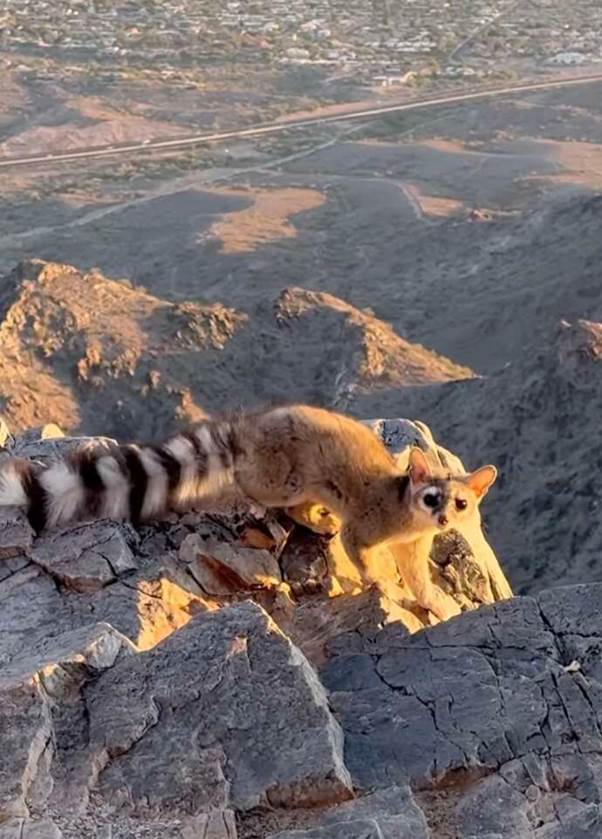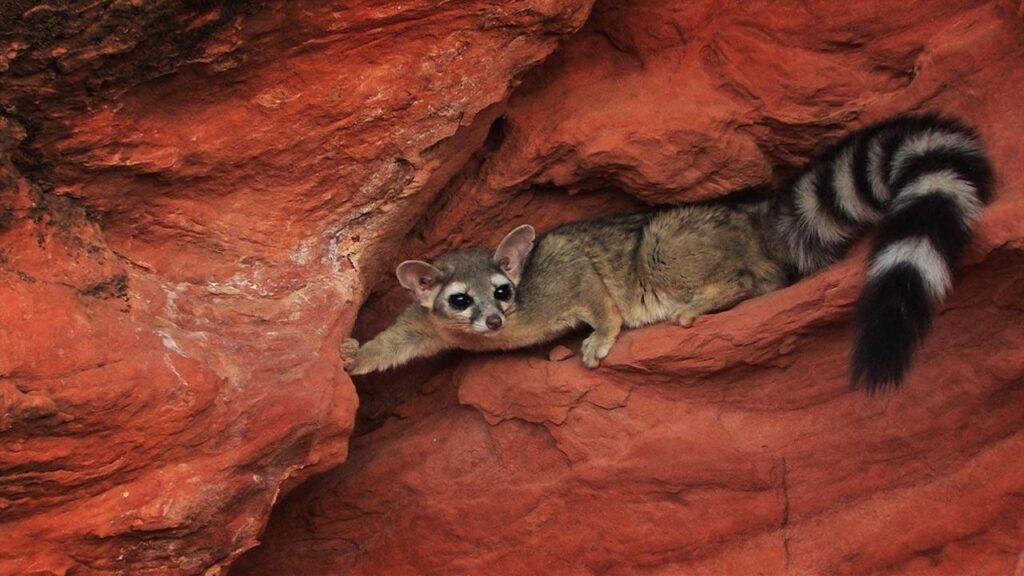
A Familiar Path, An Unbelievable Sighting
For a dedicated hiker, a familiar trail becomes a kind of moving meditation. The rhythm of your boots on the dirt, the familiar twist of the path, the way the light hits a particular rock at a certain time of day—these are the details that build a deep and personal relationship with a place. For Jacqueline Hurst, Phoenix’s Piestewa Peak is just such a place. Having hiked its trails nearly a hundred times, she thought she knew its secrets. But on a recent early morning hike, just as the sun was beginning to cast its golden glow over the desert landscape, the mountain decided to share one of its most precious secrets with her. It began as a flicker of movement in her peripheral vision, a subtle disturbance among the rocks and shrubs that could have easily been missed. She paused, her senses on alert. And then, she saw it. “I saw that unmistakable beautiful tail,” Hurst said. It was the iconic, black-and-white banded tail of a ringtail, a creature so elusive it feels more like a myth than a mammal. The heart of an experienced hiker and nature lover skipped a beat.

The ringtail, despite being Arizona’s official state mammal, is a phantom. A well-kept secret of the Sonoran night. While often mistaken for a cat or a fox, it is actually a member of the raccoon family, a creature perfectly designed for a life lived in shadow. Their most striking feature is, of course, the magnificent, fluffy tail, often longer than their body, which they use for balance as they navigate rocky cliffs and canyons with breathtaking agility. Their other defining characteristic is a pair of enormous, dark eyes—two polished orbs designed to drink in the moonlight, granting them superb night vision and an undeniably adorable appearance. They are, by nature, deeply shy and reclusive, creatures who avoid humans at all costs. To see one at all is a gift. To see one in the daylight, just a few feet away, is nothing short of a miracle. Hurst, who had only seen one once before in her countless hikes, knew she was being granted a rare and precious audience with the ghost of the desert.

A Moment of Stillness, A Complicated Joy
The world seemed to shrink to the small space between hiker and animal. Hurst froze, instinctively holding her breath, not wanting to make a sound that might shatter the magical spell of the moment. Just a few feet away, the ringtail was calmly enjoying a small piece of fruit, seemingly unbothered by her presence. She slowly, carefully, raised her camera, capturing the delicate paws, the curious face, and those incredible eyes. “They’re quite small, and certainly very cute,” Hurst recalled. A wave of pure, unadulterated joy washed over her. This was the moment every wildlife enthusiast dreams of: a peaceful, close encounter, a silent, mutual acknowledgement of existence. But as the seconds ticked by, a second, more complicated feeling began to surface. A nagging worry settled in her gut. A truly wild ringtail should be wary. It should not be this comfortable, this close to a human, especially not after the sun had already risen. Her joy was now tinged with a deep and unsettling concern.

The Vanishing Act and a Plea for Wildness
After a few more moments, as if a silent alarm had gone off, the ringtail finished its meal and vanished. It didn’t just run; it seemed to melt back into the rocks and shadows, disappearing with a fluid grace that left Hurst wondering if she had imagined the whole thing. But the photos on her camera were proof that the magical encounter was real. As she continued her hike, the initial euphoria gave way to a more sober reflection. “Unfortunately, I think one of the reasons that this particular ringtail was still active after sunrise is likely because some hikers are either leaving food behind or actually feeding the ringtails,” Hurst said. She recognized the dangerous truth that many well-meaning people don’t: habituating a wild animal to humans is a threat to its survival. “I think people believe they are doing a good thing, but they’re not.” A fed animal is often a dead animal. Hurst left the mountain that day basking not just in the glow of a rare sighting, but with a renewed sense of purpose: to share her incredible story and to gently remind us all that the greatest kindness we can show wildlife is to let it remain truly, beautifully wild.


